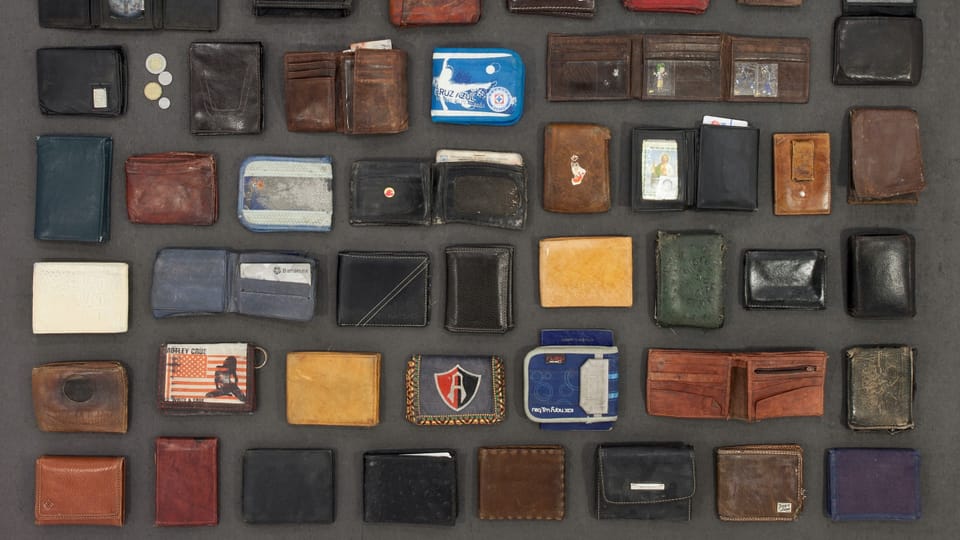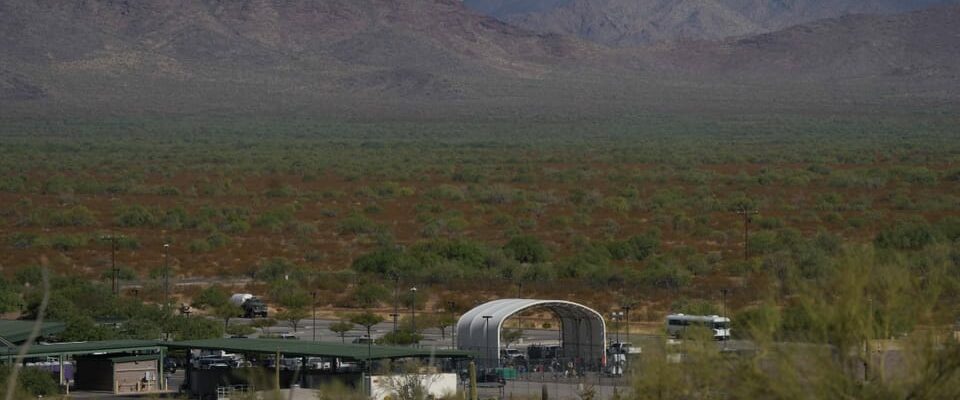Contents
He records what was taken from refugees when they entered the USA. The US photographer Tom Kiefer provides a quiet picture of migration.
The small town of Ajo in southern Arizona looks like something out of a Quentin Tarantino film. It is surrounded by a sprawling military base, Tohono O’odham Nation lands and Organ Pipe National Monument.
Ajo is the last large community before the Mexican border. Highway 85, coming from the north, takes you to the central plaza: a Spanish Colonial-style square surrounded by one-story buildings.
The photographer who documents America
Tom Kiefer is waiting here on a scorching hot day. The artist, photographer and graphic designer was born in the US state of Kansas. He has lived in Ajo since 2001.
Legend:
The Border Patrol Station in Ajo, Arizona. The photographer Tom Kiefer worked here as a caretaker for a long time.
IMAGO/USA TODAY Network
His studio and archive are on the first floor, with a steep wooden staircase leading up. Kiefer says he moved to Ajo to concentrate full-time on photography.
“I wanted to document America,” he says. «And somehow that happened. But instead of going out to take the pictures, America came here to me.”
A hundred thousand belongings
In his approximately 30 square meter archive, the objects are piled up on overloaded tables and shelves. But everything is in its place, just as Kiefer needs it for his photos. “If you count everything, there are certainly hundreds of thousands of individual pieces,” he says.
These include blankets, clothing and toys, but also letters and photos. Kiefer collected all of these items in his former job: for more than ten years he was a caretaker at a Border Patrol station south of Ajo, a reception center for migrants.
“Potentially dangerous things” end up in the archive
For Kiefer, it all started with canned goods that people had with them on their way north through the desert: “Everything was thrown away, I thought that was terrible. You don’t throw away good food.”
Kiefer went to the station manager and asked if he could take the canned goods to the local street kitchen. He was allowed to do that. “When I fished the canned goods out of the containers, there were also Bibles, rosaries and lots of family photos.”

Legend:
Every wallet is a fate: An excerpt from “Billdfolds and Wallets, 2014”, a photograph from Kiefer’s series “El Sueño Americano / The American Dream”.
tom kiefer / redux pictures
Whatever the border officials deemed “unnecessary” or “potentially dangerous” among the migrants’ belongings ended up in the garbage containers. It was almost all they had with them. Kiefer took it with him and his archive grew day by day.
Simple images, deep meaning
Kiefer photographs the objects in the archive. With his pictures of wallets, shoelaces, shoes, backpacks, hairbrushes and jeans, he documents sensitively and respectfully.
Kiefer calls his photo project «El Sueño Americano / The American Dream». In the pictures, the objects are simply lying next to each other, lined up, stacked up.
The quiet and calm photos only depict objects and often look like an advertising image. In fact, Kiefer shows what migration – a topic that is far away for many – actually is: a story about normal people on their way to a hopefully better life.
Against the time
Tom Kiefer has taken hundreds of photos like this over the years. And he is far from finished with his documentation.
But he’s running out of time. He has Parkinson’s, which visibly affects his balance and mobility. He hopes for help from outside, but also says: “I’ll keep going until I can’t anymore.”
Radio SRF 2 Culture, cultural news, January 10, 2024, 7:06 a.m.
